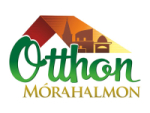Content
Many organizations struggle to manage their vast collection of AWS accounts, but Control Tower can help. Achieving full-stack observability remains fraught with challenges, but it’s a necessary move for enterprises running complex … SaaS includes a range of applications, such as Google Apps, Microsoft Office 365 and Salesforce.

Over the past 2 years, a large number of enterprises have jumped onto the cloud bandwagon. With XaaS, companies can gain visibility around corners, make quick course corrections, harness technology to reimagine business processes and reinvent how to deliver value to customers. For this, they will need help from experts in the field to streamline the processes and offer end-to-end guidance.
Anything-as-a-service, or XaaS, refers to the growing diversity of services available over the Internet via cloud computing as opposed to being provided locally, or on premises. Also known as everything-as-a-service, anything-as-a-service reflects the vast potential for on-demand cloud services. In this method provider integrates security services with company’s infrastructure through internet which includes anti-virus software, authentication, encryption etc.
SaM CloudBOX PaaS
Also, the system might not be fully accessible when a new system version is released. To overcome this, you can go for a zero-downtime deployment strategy. This approach allows everything-as-a-service (XaaS) the service to stay fully responsive during the deployment process. What’s more, cloud providers offer tools that can help to configure blue/green or zero-downtime deployment.

Before moving your IT infrastructure to the cloud, you should thoroughly consider all the advantages and disadvantages of PaaS and realize the value it can bring to your company. The business pays only for a subscription, sometimes based on the time they use these tools, making it highly cost-effective. This is similar to the way in which a business might lease vehicles instead of purchasing outright. The provider owns the hardware and installs it on the client’s site. This allows clients to utilise hardware they may not be able to afford to purchase, and is especially beneficial to small and medium-sized businesses.
Intelligent Platforms
These companies may be the ones whose online platforms, such as browsers and apps, always have to be online. As a result, users of the XaaS-integrated companies typically experience a fluidic workspace as everything is readily available on their browser or app. From production processes to lifestyle habits, the cloud has changed the face of the world with its powerful tools. Infrastructures such as SaaS, IaaS, and various others flooded the market and boosted productivity.
The idea behind the PaaS pricing is to charge customers for the resources they actually utilize, which is called the pay-as-you-go model. PaaS providers may https://globalcloudteam.com/ also require a fixed fee for using a specified amount of resources. There is also a range of smaller providers that offer high-quality services as well.
- Infrastructures such as SaaS, IaaS, and various others flooded the market and boosted productivity.
- Further, XaaS is now being extended even beyond technology now into products as a service with servitization.
- As XaaS becomes more popular, bandwidth, latency, data storage, and retrieval times can suffer .
- What is the maximum amount of resource that may be used by the authenticated user.
- Each XaaS can extend this media type to represent the service instances that it supports.
The following sections provide details on the different cloud resource data models. This represents the collection of interactions that are supported by the Cloud. For example, in HTTP protocol, the data would consist of the supported HTTP request triple of . Simple answer – write another application or integrate your application with the SaaS.
XaaS using the example of cloud CRM
The main benefit of PaaS is that it allows starting applications quickly even for small groups. Moreover, with a cloud service, developers can collect statistics from their app, analyze information, and make best decisions for their business. You can find examples of typical IaaS services e.g. at OVH as Public or Private Cloud, or at AWS as cloud computing.

For an innovative idea to spark transformation, top management has to approach a strategic enablement partner that can adeptly align business goals with market demands and technological opportunities. The buyer does not receive individual licenses, but only pays for the use of the software. This gives the company permanent access to the latest software version. For example, all services are billed according to their user or usage. This also allows a quick response to changing market requirements.
Drawbacks or disadvantages of XaaS
Some XaaS providers may guarantee services through a service level agreement . Organizations are turning to a XaaS business model to modernize operations as well as free up resources to innovate. Many businesses are also using the benefits of XaaS to become more agile and transform digitally.
Researchers assumed that global cloud computing revenue is going to reach $342 billion dollars by 2025. Through XaaS model by servitization, products and services are combined through which business innovate faster and enhance the relationship with customer which further increases their revenue. This model allows businesses to quickly adapt to changing market conditions with new apps or solutions. Using multitenant approaches, cloud services can provide much-needed flexibility. Resource pooling and rapid elasticity support mean that business leaders can simply add or subtract services as needed.
Experience with all the needed tools
For example, in IaaS, there were quota defined for CPU, Memory, number of servers, where the usages of each is encapsulated into a Quota Usage resource. The status of the entity represented by the service instance. Meanwhile, 70% said it gave them the chance to use technological tools they would otherwise find too expensive to afford. Gradually, the amalgamation of all these services into a single, comprehensive option created “everything as a service,” currently known as XaaS. According to Deloitte Insights, this is a strategic and operational blueprint that has begun overturning most other accepted operational business models.
Experts recommend that a company store crucial processes locally and locate only non-critical functions in clouds. В SaaS — a client gets a ready-to-use application in the cloud. Further, XaaS is now being extended even beyond technology now into products as a service with servitization.
The Future Of XaaS
This is especially useful during the remote collaboration that has to be established when extending a software development team. Additionally, the possibility to build remote workflows is crucial to ensure health safety during the time of COVID-19. Traditionally, organizations hosted their information technology infrastructure on-premise.
Meet Patricia Akpo Uyeh, a Woman in Technology
A lot of XaaS also do not allow for extensive customization. There are usually standard services that businesses can explore and discover if those tools meet all the operational requirements. There’s a lot of great developers out there bringing up terrific services. When you pay for one of those, either to integrate with your own services or to use as is, you are in fact using a SaaS. Dropbox, Twilio, Adobe and Office 365 offer different kind of services which are treated as SaaS systems. For example, IaaS is a category that encapsulates infrastructure services.
When it comes to the cloud, security gets even more critical. It is vital to ensure that the technology is in the right hands. Our People Achieving your goals is much easier with a strong team by your side.
Advantages and Disadvantages of PaaS: a Practical Overview
With the emergence and widespread adoption of cloud computing services, many enterprises migrated to infrastructure as a service. Anything as a service brings multiple advantages that involve cost savings, improved time to market, flexibility to focus on core business, scalability, and reliability. Now, let’s consider the most popular models that involve SaaS, PaaS, and IaaS. Since cloud computing offers plenty of benefits, the demand for it has surged over the past years. Increased Internet and smartphone penetration, remote collaboration, as well as growing volumes of data are the key factors driving the widespread adoption of cloud computing. According to ReportLinker, the worldwide cloud computing market is predicted to spike from $445.3 billion in 2021 to $947.3 billion by 2026, at a CAGR of 16.3% during the indicated period.
With the increasingly digitised world becoming more and more technologically complex, companies are willing to use these services. A good example of Software as a Service is Microsoft Office 365. Here, users work with the well-known Office packages such as Word, Excel etc. via the browser. When using the SaaS or XaaS service as a whole, special attention must be paid to data security and protection. Personal data is subject to strict GDPR guidelines and compliance requirements.
Cloud resource representations are made up of fields, each with a name and value, encoded using a JavaScript Object Notation dictionary. The values may be lists, dictionaries, or numeric or string literals, each of which is represented in JSON in accordance with RFC 4627. This represents the quota information in the context of a service family.
The advantage of this service is that the users get the software access and are also supported with server to storage access. Early in the pandemic, leaders recognized the XaaS model as key to helping companies stay resilient and nimble in these uncertain times. The combination of cloud computing and ubiquitous, high-bandwidth, global internet access bodes well for XaaS growth. Signs from vendors and researchers point to XaaS going mainstream as a business model as customers bring more workloads into the cloud. IaaS is a model where a cloud provider provides IT infrastructure, such as storage, server and networking resources, over the internet to customers on a subscription basis . Examples of IaaS offerings include AWS Elastic Compute Cloud, Google Compute Engine and Microsoft Azure.
